Bizzarrini Giotto is a future-statement supercar from a reborn brand
Representing the apex of Italian automotive design, the proposed Bizzarrini Giotto blends heritage with dramatic style

This is the Bizzarrini Giotto, a first render of a new supercar from the reborn Italian sports car manufacturer. The Bizzarrini name returned in 2020, initially in order to revisit the most striking racing machines from this little-known Italian brand. The revived brand’s first car, the 5300 GT Corsa Revival, arrived early last year, painstakingly recreated from a storied, Le Mans-winning 1965 original using traditional construction methods.

Bizzarrini Giotto and 5300 GT Revival
Now the Bizzarrini stable is expanding, only this time the design is all new. The Giotto is named for the brand’s namesake, Giotto Bizzarrini, a legendary automotive engineer best known for guiding Ferrari’s iconic 250 GTO to production and for designing Lamborghini’s brand-defining V12 engine in the early 1960s.
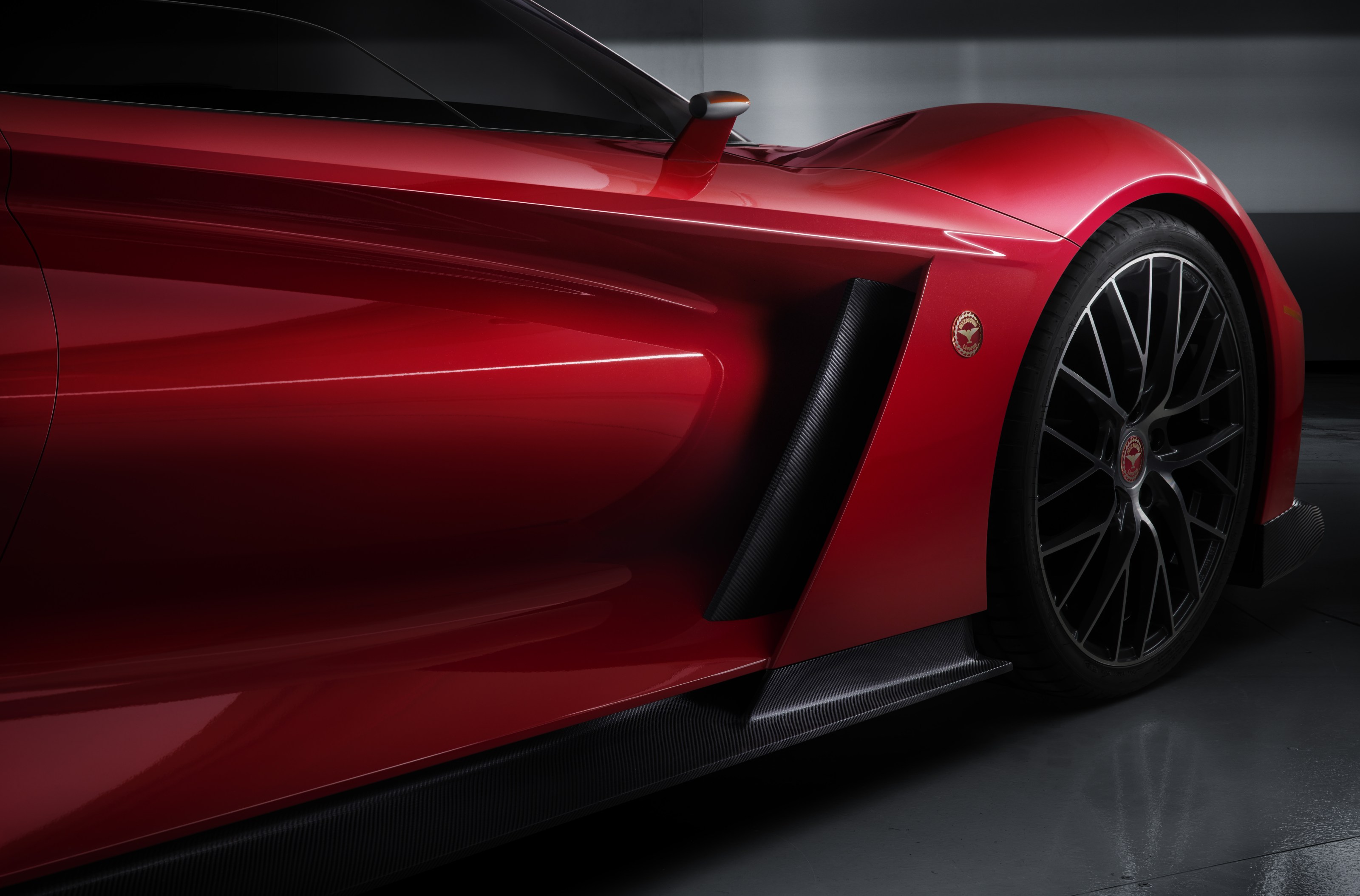
The Bizzarini Giotto, shown here in renders and a sketch, has been designed by Giorgetto Giugiaro, perhaps the best-known and most accomplished of all post-war Italian automotive designers. Still working at the age of 84, at the time of writing, the master now works alongside his son Fabrizio as GFG Style. Both contributed to the form of this exceptionally low two-seater, with its deep, fold-like air intakes cutting into the nose and flanks.
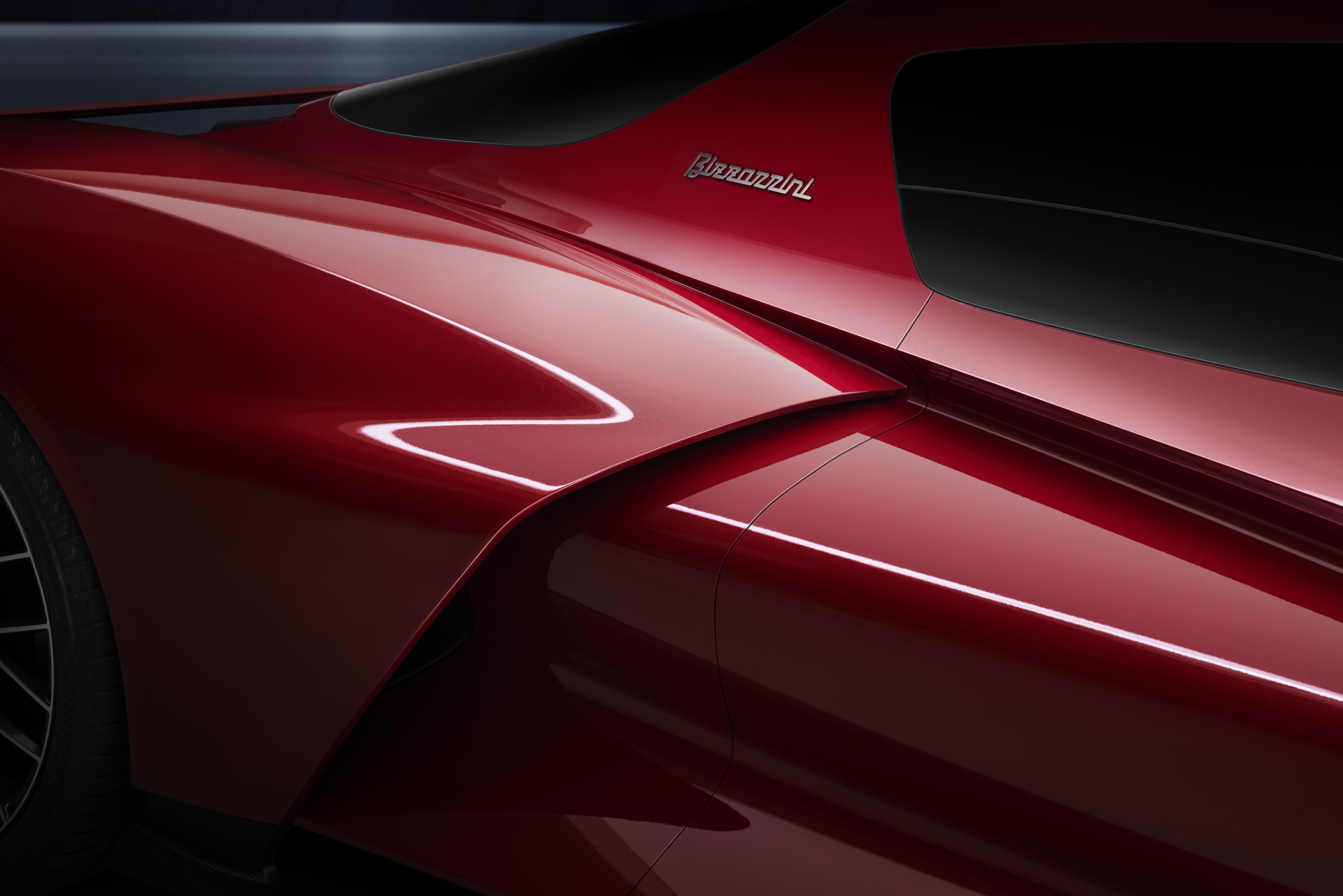
For the revived brand, the partnership marks another welcome return, for the elder Giugiaro contributed to the lines of the original Bizzarrini 5300 GT during his time at Bertone. Throughout the company’s relatively precarious first period of existence, just over 133 examples of the 5300 GT were built, with no two being exactly the same thanks to handcrafted processes and subtle changes in bodywork and mechanical specification.
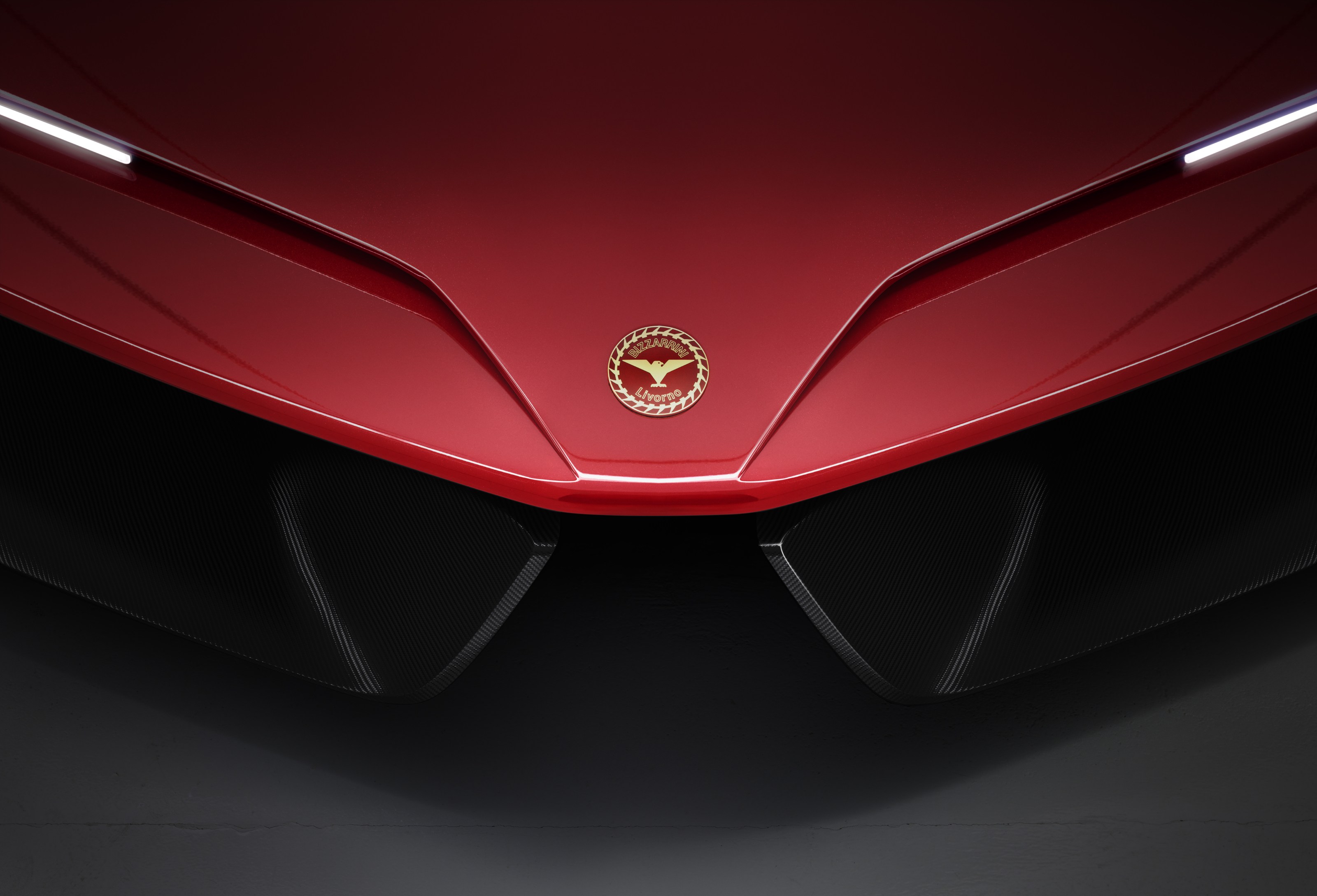
The new Giotto will be built to exacting tolerances from carbon fibre, with strong hints of the dual bonnet vents that gave the original models their ‘face’. Other elements brought into the modern era include the wrap-around rear windscreen and the prominent central location of the Bizzarrini badge.

Bizzarrini 5300 GT Revival
Other than that, it’s a clean sheet of paper. Bizzarrini is proposing the Giotto incorporates a V12, mounted in the rear-mid position (the 5300 GT was front-mid-engined), but other details are notably scarce. Given Giotto’s early relationship with Lamborghini, it seems likely that the reborn Bizzarrini will once again partner with the supercar maker to source the ‘exclusive naturally aspirated V12 engine’ planned for the car.

It might seem strange to be ushering in a new, conventionally powered supercar in what are surely the twilight years of combustion. But in this rarefied market sector, cars are collected, rather than used, perhaps only driven sparingly on the track. The company’s newly appointed chief technology officer, Chris Porritt – an experienced engineer with stints at Aston Martin, Tesla and Rimac – describes the Giotto as ‘a car that appeals to those experienced drivers seeking purity, authenticity and rarity’.
Wallpaper* Newsletter
Receive our daily digest of inspiration, escapism and design stories from around the world direct to your inbox.
For now, Bizzarrini is busy building the 24 units of the 5300 GT Corsa Revival, with the Giotto slated to start testing next year. A ten-year strategy will see the company continue to dig into its historic portfolio for inspiration, and hopefully continue Giotto Bizzarrini’s fabled talent for innovation.
Jonathan Bell has written for Wallpaper* magazine since 1999, covering everything from architecture and transport design to books, tech and graphic design. He is now the magazine’s Transport and Technology Editor. Jonathan has written and edited 15 books, including Concept Car Design, 21st Century House, and The New Modern House. He is also the host of Wallpaper’s first podcast.
-
 Japan in Milan! See the highlights of Japanese design at Milan Design Week 2025
Japan in Milan! See the highlights of Japanese design at Milan Design Week 2025At Milan Design Week 2025 Japanese craftsmanship was a front runner with an array of projects in the spotlight. Here are some of our highlights
By Danielle Demetriou
-
 Tour the best contemporary tea houses around the world
Tour the best contemporary tea houses around the worldCelebrate the world’s most unique tea houses, from Melbourne to Stockholm, with a new book by Wallpaper’s Léa Teuscher
By Léa Teuscher
-
 ‘Humour is foundational’: artist Ella Kruglyanskaya on painting as a ‘highly questionable’ pursuit
‘Humour is foundational’: artist Ella Kruglyanskaya on painting as a ‘highly questionable’ pursuitElla Kruglyanskaya’s exhibition, ‘Shadows’ at Thomas Dane Gallery, is the first in a series of three this year, with openings in Basel and New York to follow
By Hannah Silver
-
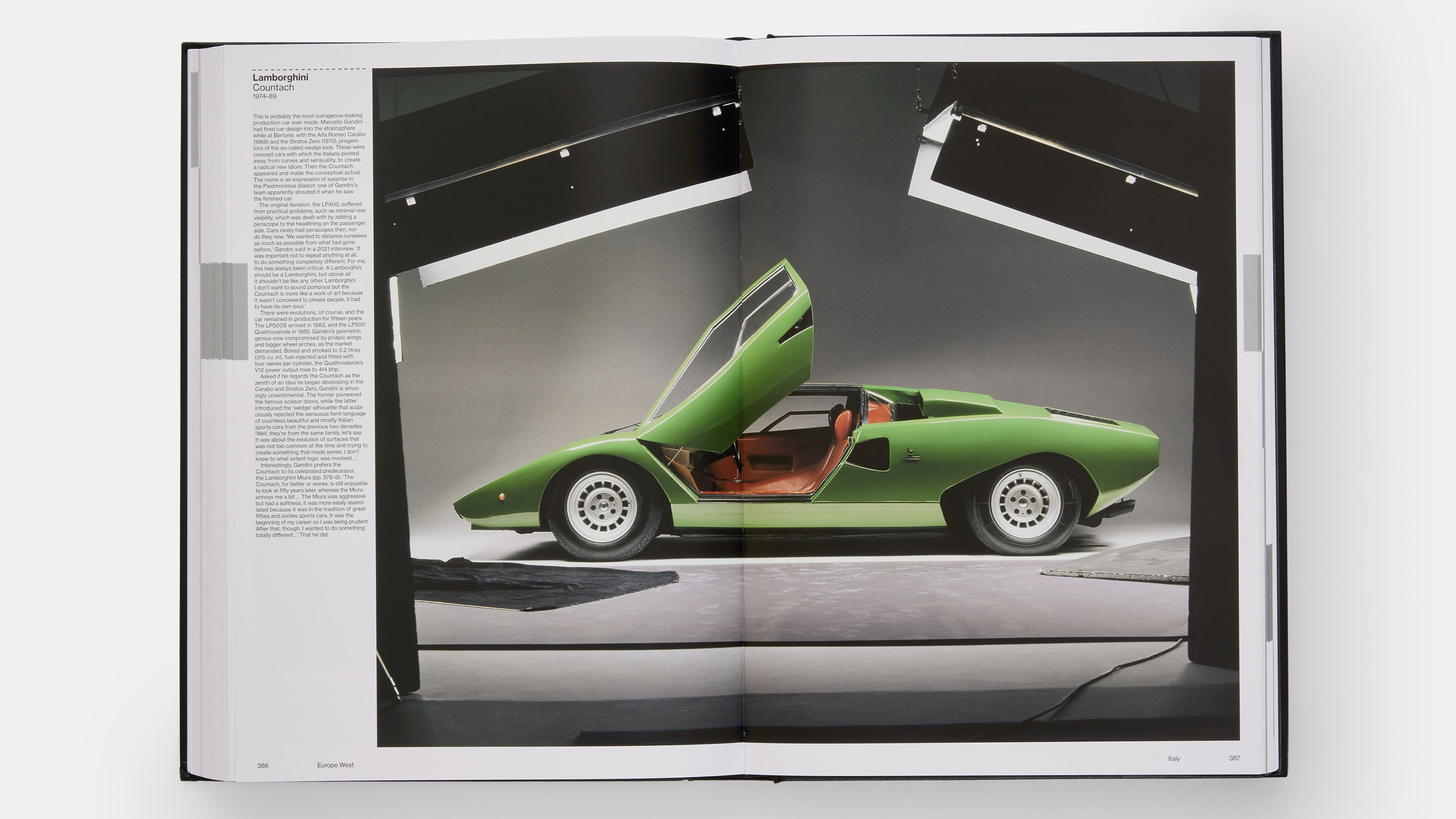 ‘The Atlas of Car Design’ chronicles 130 years of automotive art
‘The Atlas of Car Design’ chronicles 130 years of automotive artPhaidon’s epic monograph ‘The Atlas of Car Design: The World’s Most Iconic Cars’ assembles a multistorey’s worth of precious metal from around the world
By Jonathan Bell
-
 New breed of all-electric camper vans promises zero-emission adventures
New breed of all-electric camper vans promises zero-emission adventuresEmbrace the fast-expanding world of electric camper vans and RVs – from full conversions to tantalising future concepts – for silent running and zero emissions
By Jonathan Bell
-
 VW ID.3 gets a welcome overhaul in a quest to create the ultimate all-rounder EV
VW ID.3 gets a welcome overhaul in a quest to create the ultimate all-rounder EVThe Volkswagen ID.3 is an EV without ego, combining excellent range and equipment with a compact package
By Jonathan Bell
-
 Fiat Topolino infuses every journey with the spirit of la dolce vita
Fiat Topolino infuses every journey with the spirit of la dolce vitaFiat enters the world of electric microcars with the new pocket-sized Topolino
By Jonathan Bell
-
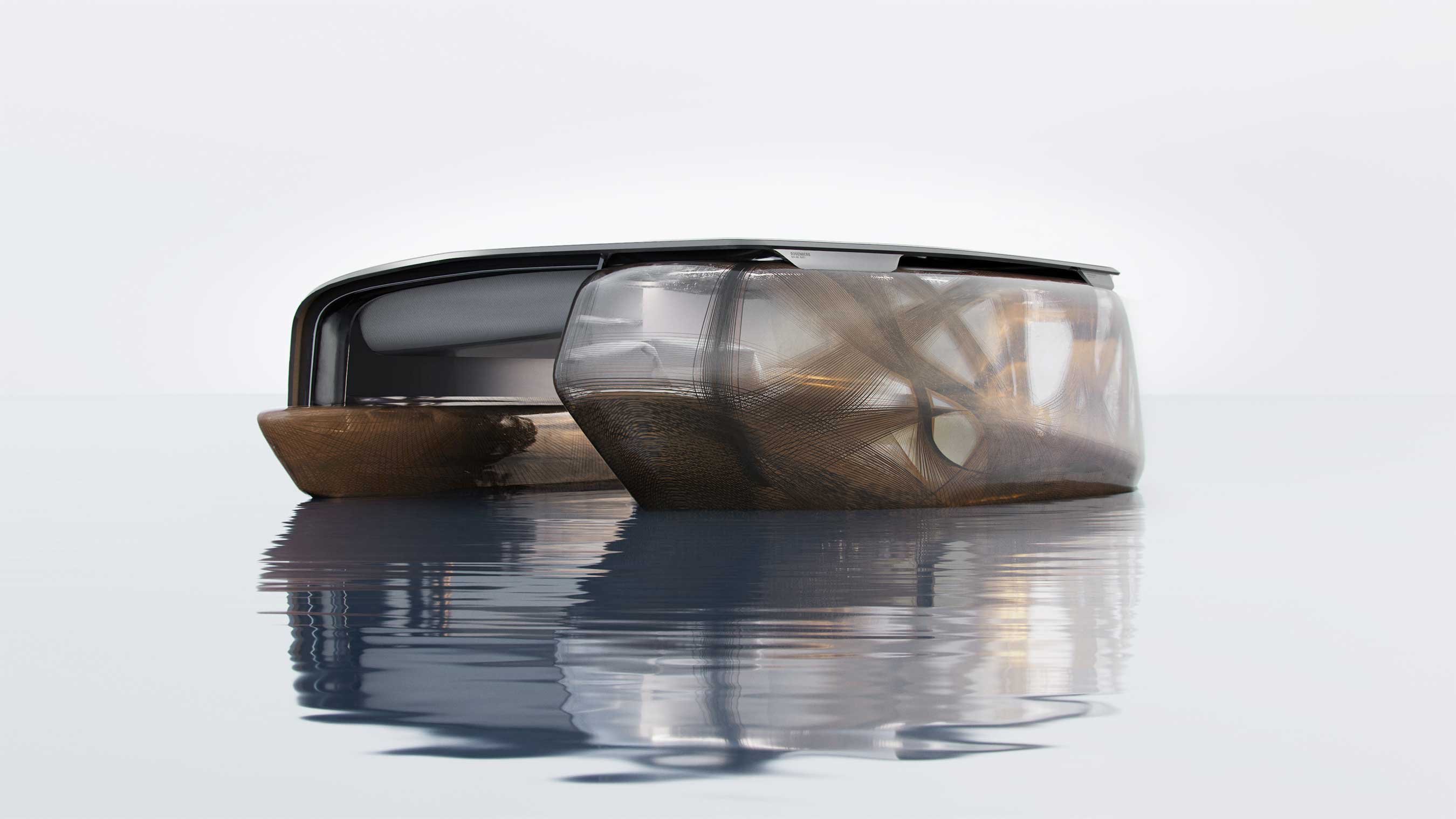 Blue Nomad is a floating habitat shaped by Swiss students and Danish designers
Blue Nomad is a floating habitat shaped by Swiss students and Danish designersInspired by traditional ocean-going vessels, the Blue Nomad Floating Habitat is a prototype dwelling for a drowning world, shaped by students from Rosenberg
By Jonathan Bell
-
 Garage Deluxe will stash your supercars securely for all time
Garage Deluxe will stash your supercars securely for all timeGarage Deluxe customisable underground car parks are part museum, part entertaining space. All you need is the acreage and the automobiles
By Jonathan Bell
-
 Brompton Bicycle and David Millar’s CHPT3 brand reveal new folding bike
Brompton Bicycle and David Millar’s CHPT3 brand reveal new folding bikeThe Brompton x CHPT3 v4 is a minimalist folding bike fit for the city streets, with Brompton’s signature compact frame, pared back for added performance
By Jonathan Bell
-
 Polestar Snow Space: showroom built of snow joins the Arctic design landscape
Polestar Snow Space: showroom built of snow joins the Arctic design landscapeThe new Polestar Snow Space in Finland is not only a retail showroom, but a temple to architecture, design, engineering and the circular economy
By Naomi Moriyama